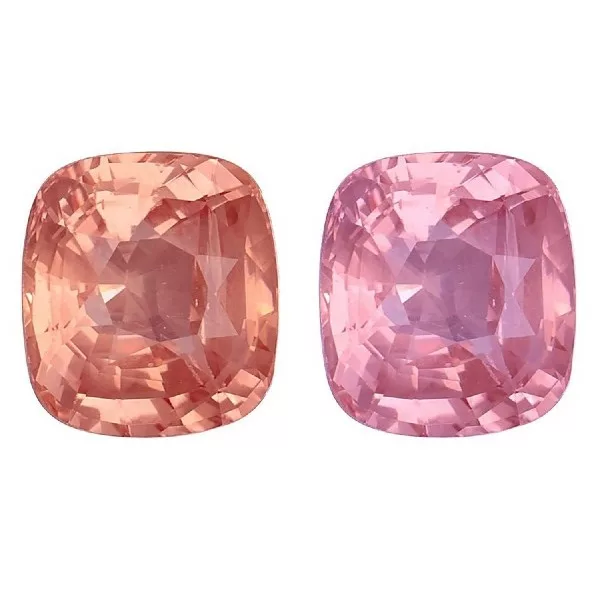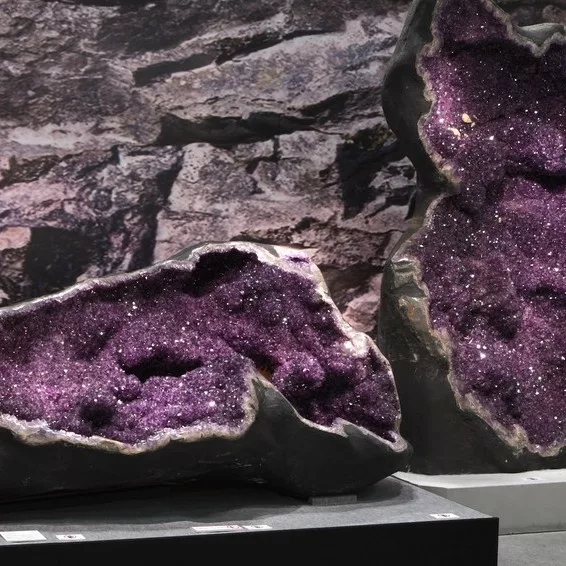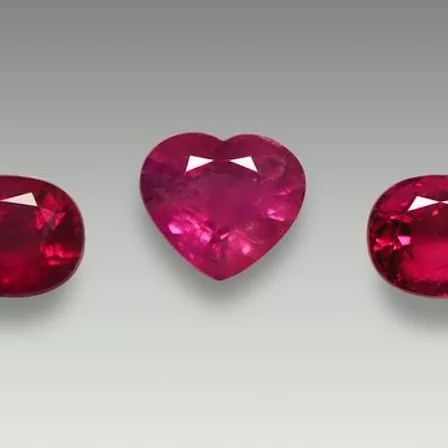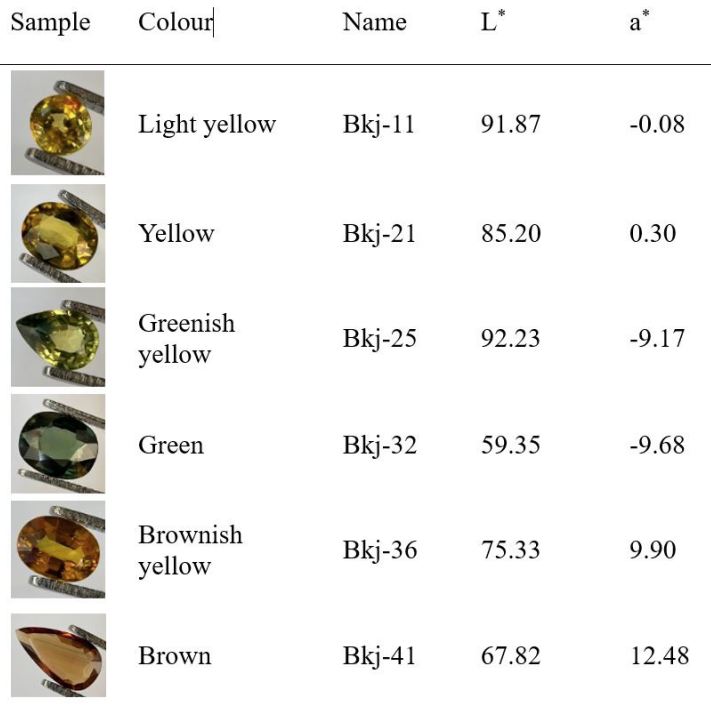Additional Observations on Unstable Color in Padparadscha Sapphires
For the past few years laboratories have been testing the color stability of padparadscha sapphires. It became an issue because we realized that the orange color in some pads was unstable and would fade in light until the stones were just pink. It’s not that we were not aware that this was possible in pads – the phenomenon had been reported in the literature years before. What changed was that we seldom saw such stones come through the labs in the past. Then it was reported that some new material was found near Ambatondrazaka, Madagascar which was pad color when it came out of the ground but then over time faded to just pink. Information about these stones and the unstable trapped-hole centers that are responsible for these changes has been covered extensively in several articles (Krzemnicki et al. (2018), Krzemnicki and Cartier (2019), Smith et al. (2019), Hughes (2022)). It was quickly noticed that exposure to a strong white light source would cause these stones to fade faster, typically in a few hours (Figure 1). The orange color could easily be regained by exposure to ultraviolet light.
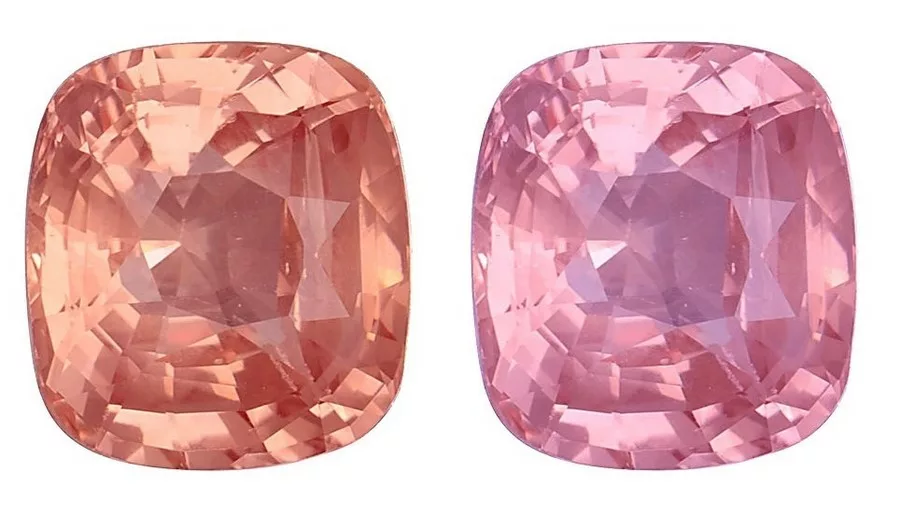
These developments made us wonder just how common this phenomenon is. As a quick test we pulled out of our reference collection a large selection of pink sapphires from different locations – Madagascar, Sri Lanka, Burma, Vietnam, Kenya, India, Tajikistan, and others – and put them under a low wattage gemological long wave ultraviolet light for four hours. We also included some yellow sapphires because it is known that some yellow sapphires might also change in a similar way. The color stability of yellow sapphires was studied extensively by Nassau and Valente (1987).
We were quite surprised when after the four hours we found approximately 60% of the samples changed to some degree. Only those deposits with low iron content developed orange or yellow color – anywhere from slightly orangy to pure orange. Most significantly were sapphires from Sri Lanka, Burma and Vietnam. Some but not all of the stones from these sources changed to some degree. Why this only happens to some of these stones is not well understood at this time. Interestingly, almost none of the stones from Ilakaka, Madagascar changed. We did not have any pink sapphires from Ambatondrazaka to test.
All of the affected stones reverted back to pink after exposure to strong incandescent light for about 4 hours. Therefore we instituted a color stability test for padparadscha sapphires submitted to the lab using a 150 watt halogen projector bulb from a fiber optics unit. We made sure the stones were not heated by the light source by keeping them several inches away. Most stones did not change during this test but some did. All the other major laboratories test for color stability using a similar method. We had a similar test in place for years that was used for yellow sapphires, primarily testing for irradiated sapphires which are known to be unstable. However, we almost never saw a yellow sapphire fade to any significant degree.
Several years ago a larger orangy pink sapphire came in that was put under the stability testing protocol. After the requisite 4 hours exposure time we found the stone had actually turned more orange. In fact there was now very little pink still visible. This was a completely unexpected result. It was the first time we had seen this happen.
What was going on with this stone? The halogen light source we were using produced the opposite reaction we expected. We exposed the stone to a number of other light sources including LWUV, strong SWUV, daylight and other light sources thinking that maybe we would have an unexpected result with one of these but in none of these cases did the orange component diminish. It occurred to us that heat might affect it but this stone did not belong to GIA so we could not do that. We contacted several outside scientists with significant knowledge of color in gemstones and they also could not initially think of a reason for this unexpected behavior.
Shortly thereafter covid forced our labs to close for three months. Every stone in our possession at that time were locked in our safes. When the labs reopened and this mystery stone was brought out once more it had returned to the orangy pink color it was when we first saw it. We quickly realized that the only thing that had changed was the stone was in the dark for an extended period of time. This is the same type of change we see with chameleon diamonds. Over the next year or so we encountered several more of these stones – some not treated, some heated and a couple beryllium diffused (Figure 2). We were able to purchase one of the diffused stones so we could perform testing we would not do to a client owned stone. The first such test was to heat the stone. The stone was heated to 325°C for 2 hours which completely removed the orange color, leaving the stone purplish pink in what might be considered its “ground state”. Again, this is similar to the reaction we would expect from a chameleon diamond. Interestingly, heating the stone to 200°C did not change the color at all.
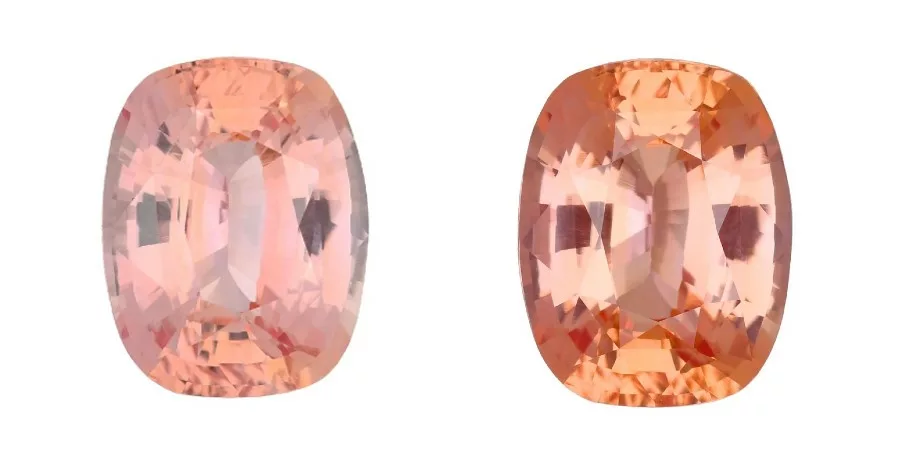
We also exposed this stone to UV light and sunlight from its ground state. As expected the UV light charged the stone more than anything else, but exposing it to direct sunlight for one hour also charged it (Figure 3). The differences in the degree of change between the ground state, after fade testing, exposure to sunlight for one hour and exposure to UV light can be seen in the UV-VIS spectra (Figure 4). The spectra shows a change in the absorption centered at 475nm which has been attributed to trapped-hole centers (Dubinsky et al. 2020).

In the interim we had purchased a few LED fiber optics units. After charging this stone back up to its orangy state, performing the stability test using the LED unit once again removed the orange and the stone was once again purplish pink. Obviously there was some difference between the 150 watt halogen light source and the LED light source that was affecting this stone in a different manner. In measuring the output of both of these sources we found that the halogen source did have a very small UV component down to about 360 nm. The LED source however did not have any UV component.
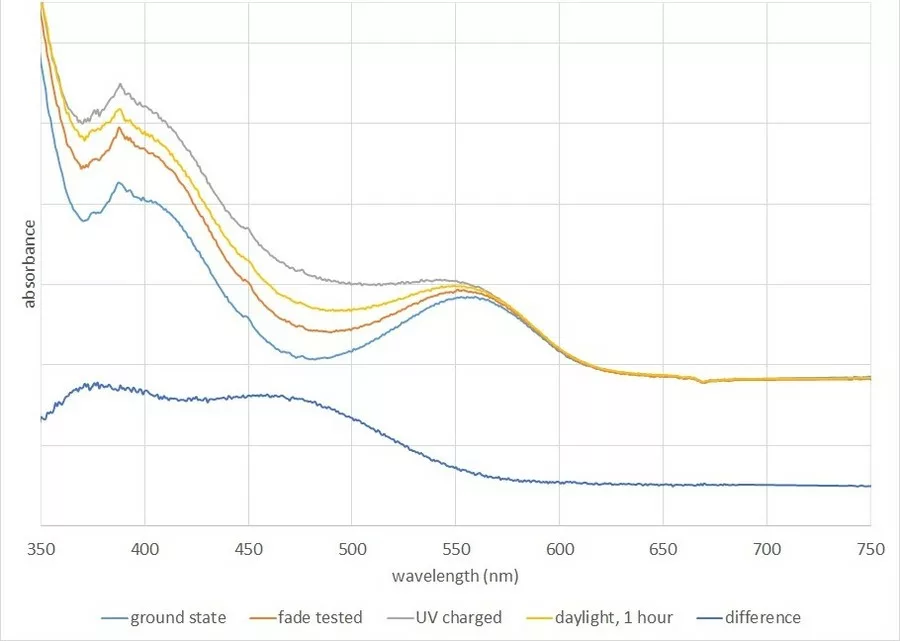
We can conclude from this information that it is visible light wavelengths that cause the unstable color component to fade. The vast majority of pink sapphires that will develop orange color are sensitive to UV light but not sensitive enough to maintain the unstable color center with the minimal amount of UV produced by a halogen light source. However, a rare few such stones are so sensitive to UV that even that small amount will produce orange. It takes a light source like the LED that is all visible wavelengths with no UV component to eliminate the orange color.
This begs the question – what is the “actual color” of these stones? What color should we call these stones on our gemological reports? To explore this further we mounted the stone we had purchased in a simple solitaire ring in its ground state. One of our wives (AP) then wore the ring under normal circumstances such as in the home, in an office environment and outdoors for five days. At the end of that time the stone was similar in color to the color that was observed after fade testing the stone. This might be considered the most representative “true color” of the stone as exposure to different light sources during the day and spending the night hours in the dark would all affect the color. In light of these facts we submit that the actual color of these stones is the color they are after normal wear or the color they are after a fade test has been performed. This means that most of the stones that show this behavior will be just pink under those conditions and therefore not properly called padparadscha. This is entirely consistent with the opinion of the labs that belong to the LMHC, which the GIA is one. However, these rare stones that are so sensitive to UV light that they always show an orange component under normal conditions are not the same. These stones can be called padparadscha if they still fall into that range after exposure to normal conditions. Obviously we cannot set client stones in rings and wear them for days at a time. Our testing showed that the color such stones after going through the color stability protocol is similar to the color of the stone after being exposed to noon-time Southern California daylight for one hour. Since sunlight intensity varies depending on where you are in the world, we believe that using the color of the stone after a reproducible stability test is reasonable.
References:
- Dubinsky E.V., Stone-Sundberg J., Emmett J.L. (2020) A Quantitative Description of the Causes of Color in Corundum, Gems and Gemology, 56 (1), 1-27
- Hughes, E.B. (2022) Yellow Sapphires with Unstable Color, Gems and Gemology, 58 (2), 259-260
- Krzemnicki, M.S., Klumb, A., Braun, J. (2018) Unstable Colouration of Padparadscha-like Sapphires. The Journal of Gemmology, 36 (4), 346-354
- Krzemnicki, M.S., Cartier, L.E. (2019) Padparadschalike Fancy Sapphires with Unstable Colors: Coloration Mechanisms and Disclosure. InColor, Issue 41, 92-94
- Nassau, K., Valente, G.K. (1987) The Seven Types of Yellow Sapphires and Their Stability to Light. Gems and Gemology, 23 (4), 222-231
- Smith, C.P., Chaipaksa, M., Perlmutter, A., Vasquez, L., Zellagui, R., Che, S. (2019) Heated Sapphires with Unstable Colour Centers. The Journal of Gemmology, 36 (7), 602-604

